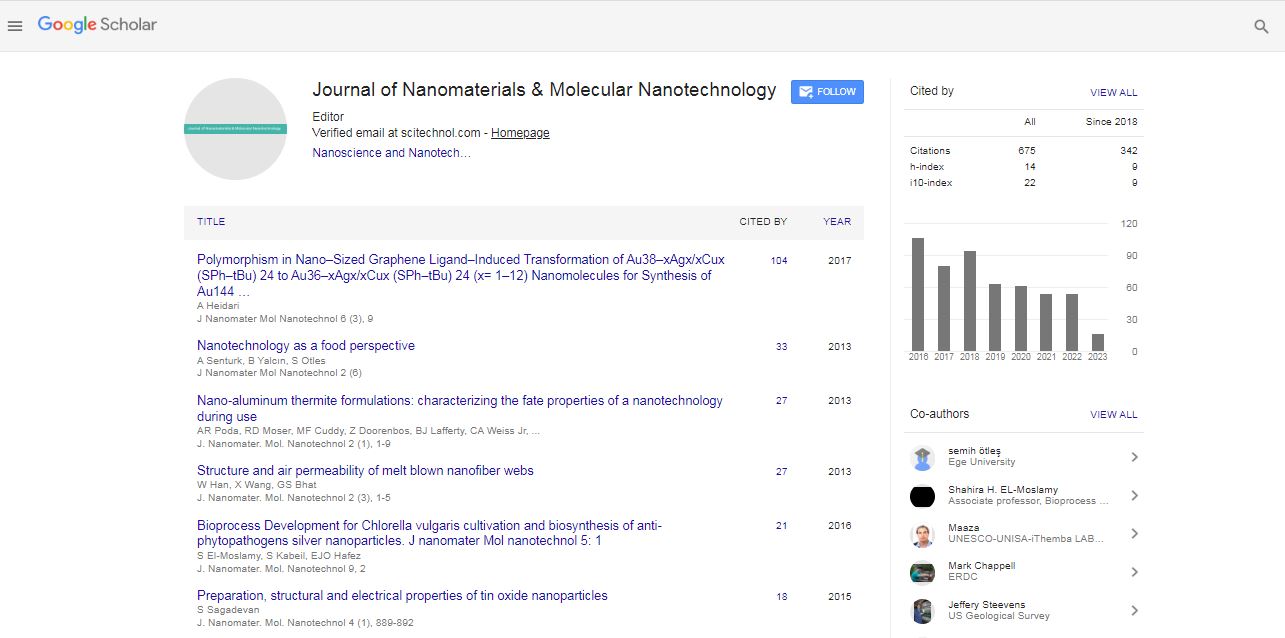Pulsed laser deposited doped Cu2O thin films for optical application
Gurpreet Kaur and Anirban Mitra
Dr. B. R. Ambedkar National Institute of Technology, India
Indian Institute of Technology Roorkee, India
: J Nanomater Mol Nanotechnol
Abstract
Cuprous oxide, (Cu2O) is a promising p-type semiconductor, finds applicability in a wide range of photo conversion devices. Pulsed laser deposition technique is employed to grow doped Cu2O thin films. Doping mechanism of silver (Ag), aluminium (Al) and (Ag+Al) in Cu2O thin films is illustrated in this report. The Al, Ag doped and (Al+Ag) co-doped Cu2O targets are prepared by the solid state reaction method by mixing Cu2O powder with Al2O3 and Ag2O, powders respectively, in stoichiometric ratios. The doping profile of both Al and Ag in Cu2O is kept 5%. For co-doped, it is 2.5% Al and 2.5% Ag in Cu2O. An Nd:YAG laser operating at wavelength 355 nm and energy 100 mJ/pulse is used to ablate the targets of (Cu2O:Al), (Cu2O:Ag) and (Cu2O:Al:Ag). X-ray diffraction analysis depicts the polycrystalline nature of the films, with a cubic crystal structure and having small crystallite size. UV-visible optical transmittance versus wavelength spectrum of these films describes low transmission i.e. 10-20%, due to the large absorption coefficient (α) for Cu2O material. The large values of absorption coefficient enable the photovoltaic and optical applications of the Cu2O films. The energy band gap of the films is determined using the Tauc’s plot relation, shown in figure 1. The optical band gap is increased with doping and it varies in the range of 2.65−2.84 eV. The increased band gap of doped thin films is attributed to the substitution of Al and Ag ions for the oxygen ions. Due to this substitution, width of the valence band is reduced to enlarge the band gap. Room temperature current voltage (I-V) plot indicates low resistivity (ρ~10-2 Ω-cm) of the films. The obtained results are of high relevance and indicate potential applications of the grown thin films in devices such as solar cells, photo detectors and optical sources.
Biography
Gurpreet Kaur has completed her PhD in Physics at Indian Institute of Technology, Roorkee, India in 2016. She has been working as an Assistant Professor in Department of Physics at Dr. B. R. Ambedkar National Institute of Technology, Jalandhar since 2016. Her current research area of interest is “Synthesis of nanomaterials for optical device applications”.
Email: sekhon.gkaur@gmail.com
 Spanish
Spanish  Chinese
Chinese  Russian
Russian  German
German  French
French  Japanese
Japanese  Portuguese
Portuguese  Hindi
Hindi 



